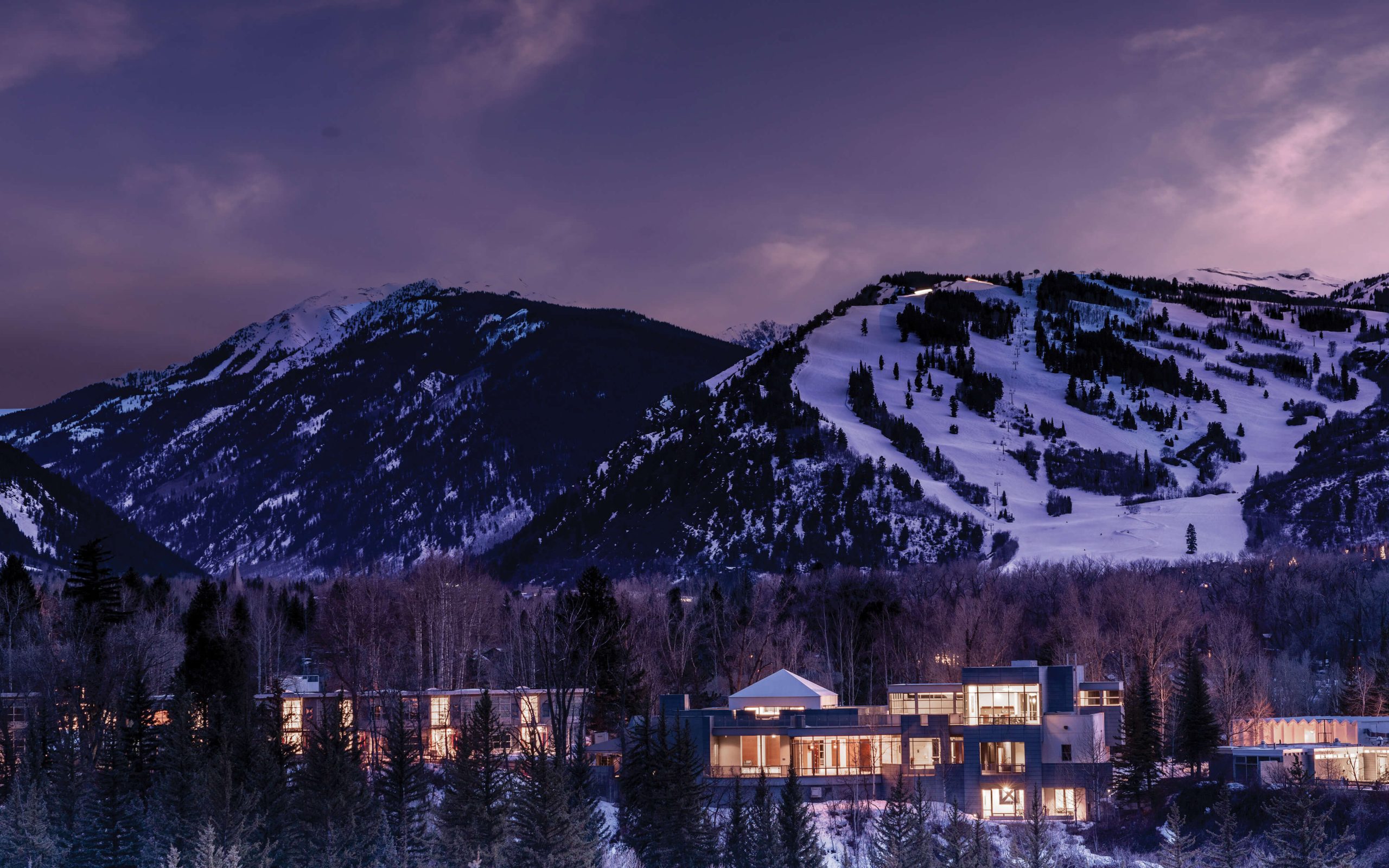
29 Oct Western Landmark: Where Design Meets Mission
Design-wise, Aspen, Colorado, has long been known for its mining-era architecture, art, and fashion-forward trend setters. But the transformation of this quiet mountain hamlet turned ski town and seasonal watering hole for the global elite does little to explain how the modernist movement, specifically Germany’s Bauhaus, made its way there.
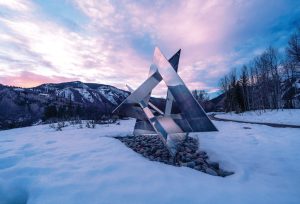
British sculptor John Robinson’s 1990 work Intuition, consists of interlocking stainless steel triangles mounted atop river rock.
The genesis lies in Chicago-based industrialist Walter Paepcke and his wife Elizabeth’s interest in the German philosopher Johann Wolfgang von Goethe. In 1949 the couple invited some 2,000 executives, artists and intellectuals to Aspen to celebrate the 200th anniversary of Goethe’s birth. Their vision called for thought leaders with diverse perspectives to gather in an isolated yet scenically spectacular setting to explore enduring human questions. After that ground-breaking event held over 20 days, the Paepkes and their collaborators founded the Aspen Institute for Humanistic Studies, now the Aspen Institute.
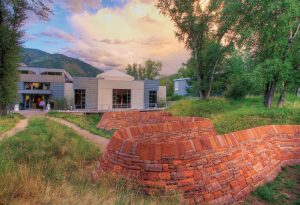
Earthworks and outdoor art, including Andy Goldsworthy’s Stone River, abound and are positioned in a way that speaks to the Bauhaus-inspired architecture and the extraordinary views.
They purchased 40 acres with sweeping views on the edge of town and commissioned Austrian-born and Bauhaus-trained architect, designer, and artist Herbert Bayer, who had moved to Aspen in 1946, to design a campus for fostering learning, leadership, and conversation that would place the human spirit at the center of public life. The Paepke/Bayer collaboration was extraordinarily productive, and enduring. Bayer restored historic in-town buildings such as the Wheeler Opera House and Hotel Jerome, produced promotional posters for Aspen as a glamorous new world ski resort, and created a campus master plan. His work at the institute included designing buildings and artworks inspired by and integrated into the spectacular natural setting, including Grass Mound (1955), widely regarded as one of the first modern earthworks.
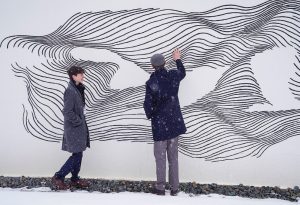
Participants in the Aspen Institute’s Teen Socrates Seminar examine Herbert Bayer’s Sgraffito Mural, located on the south side of the David Koch Seminar Building. Photos courtesy of The Aspen Institute and Aspen Meadows Resort
For 75 years, Aspen Institute has retained its relevance and influenced not only inquiring minds who attend its seminars, lectures, and conferences, but also vacationers to Aspen Meadows, making this destination a cross between think tank and resort. On any given day, guests might be awaiting the shuttle to one of four nearby downhill resorts or wedding attendees might be preparing for a ceremony on the edge of a sagebrush meadow, all while conference participants pass by on their way to morning meetings.
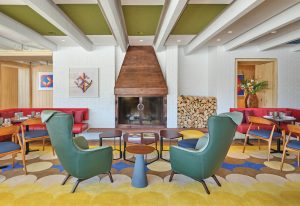
Guests at Aspen Meadows gather in a cozy bar area with built-in seating and inviting fireplace. Other spaces include a downstairs cafe, ski gear room (with ski valet), wellness center, conference rooms, a restaurant showcasing elevated regional cuisine, and an outdoor dining patio overlooking the Roaring Fork Valley.
Aspen Meadows boasts friendly staff and the full amenities of a high-end destination. A recent renovation included generously scaled and thoughtfully appointed guest suites, and the wellness center with a saltwater pool, hot tub, fitness center, and steam rooms. The main building features an inviting bar with fireplace and cozy banquette seating, and the downstairs cafe’s rustic walls are offset with paneled maroon leather, wood floors, and a fireplace flanked by bookcases.
The main attraction is West End Social, a restaurant featuring elevated regional cuisine and jaw-dropping views. There, floor-to-ceiling glass walls on two sides open to a large deck that projects out into the scenery, where the hillside falls away toward the Roaring Fork River and across to pristine hillsides. In autumn, the windows open to views of entire mountainsides covered in bright yellow aspens. In winter, snow-draped hills and mountains sparkle in the high-altitude sunshine.
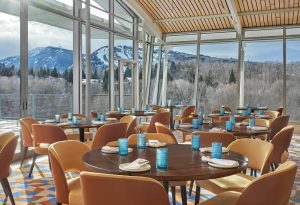
Aspen Meadows Resort’s recently renovated main building boasts a destination restaurant in West End Social, where the cuisine lives up to the setting.
The redesign was respectful of Bayer’s vision, with limited-edition reproduction prints for the hallways and guest rooms and geometric-patterned rugs in the primary colors of the Bauhaus movement. Original features of the campus design remain intact: two-story buildings for guest accommodations instead of monolithic structures, miles of walking paths through meadows and along the river, and a car-free central campus.
To visit Aspen Meadows today is to experience the Modernist ideals of the Bauhaus movement — simplicity, functionality, and harmony with nature — sitting lightly on the land in respectful juxtaposition to open spaces that inspire reflection, dialogue, and connection.
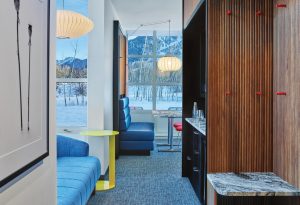
Newly refreshed suites stay true to the Bauhaus aesthetic through primary colors, upscale materials and a minimalist aesthetic. Photos courtesy of The Aspen Institute and Aspen Meadows Resort
One can contemplate major artworks, including Anaconda, Herbert Bayer’s monumental seven-piece geometric sculpture in Carrera marble; British sculptor John Robinson’s 1990 work Intuition, interlocking stainless steel triangles mounted atop river rock; Buckminster Fuller’s 36-foot-diameter geodesic dome, designed in 1952; Big Dipper, a 1973 sculpture by German-born Mexican artist Mathias Goeritz; and Andy Goldsworthy’s Stone River, a serpentine sandstone wall that winds between water features and into the Doerr-Hosier Center.
Curated exhibitions and public programming are offered by the Resnick Center for Herbert Bayer Studies, a museum that honors Bayer’s interdisciplinary perspective. “Walter and Elizabeth Paepcke believed that art in all forms must be at the center of the conversation,” says Executive Director Lissa Ballinger. “True to the Bauhaus ethos, art was integrated foundationally and holistically into every aspect of the Aspen Institute. Bayer gave physical form to the idea that art and function could inspire a better world on the campus of the Aspen Institute.”
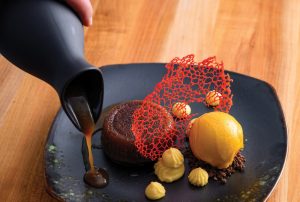
There in the shadow of the Elk Mountains and Sawatch Range, the physical beauty of the setting is a palpable and shaping force. Combined with the art, architecture, and dialogue of the institute, its effects extend well beyond a visit. As Herbert Bayer explained, “I am not so much concerned with the individual work of art as with the total shape and content of the human scene.”
Contributing Editor Chase Reynolds Ewald‘s most recent book came out in September. Her 7th book with the Montana photographer Audrey Hall, Modern West continues their study of western architecture and design in a suite of titles that include American Rustic and Cabin Style. Their multi-award-winning book Bison: Portrait of an Icon pays tribute to the wild lands and wildlife of the West.





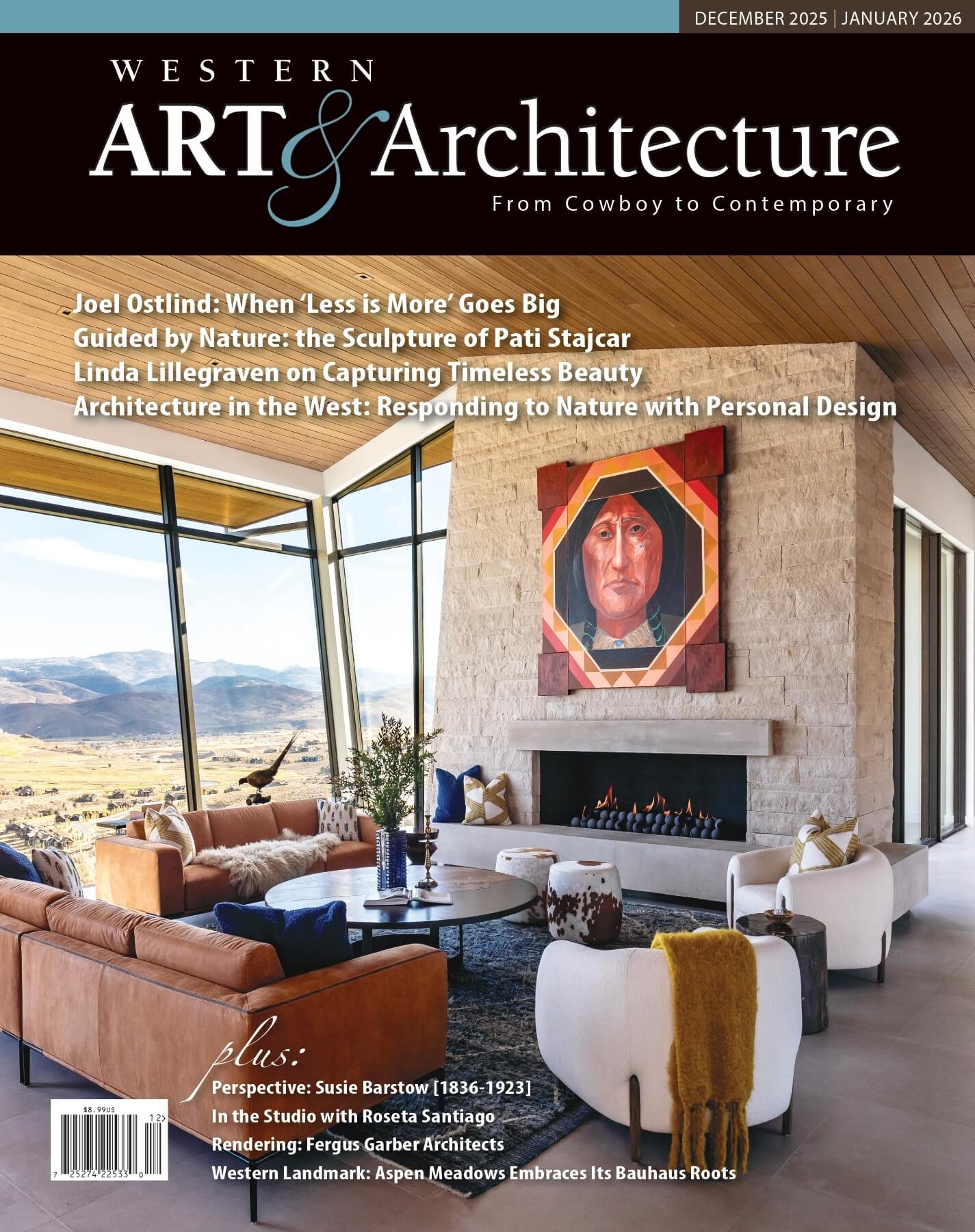
No Comments